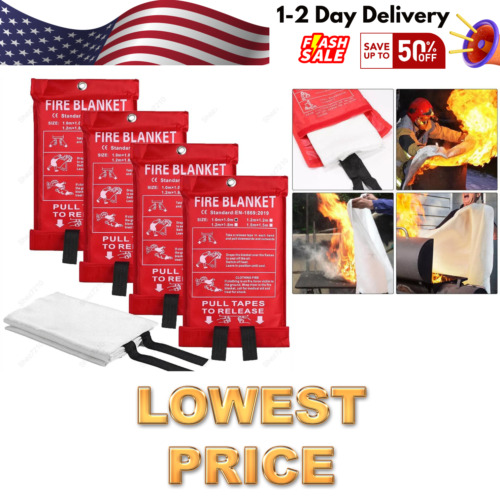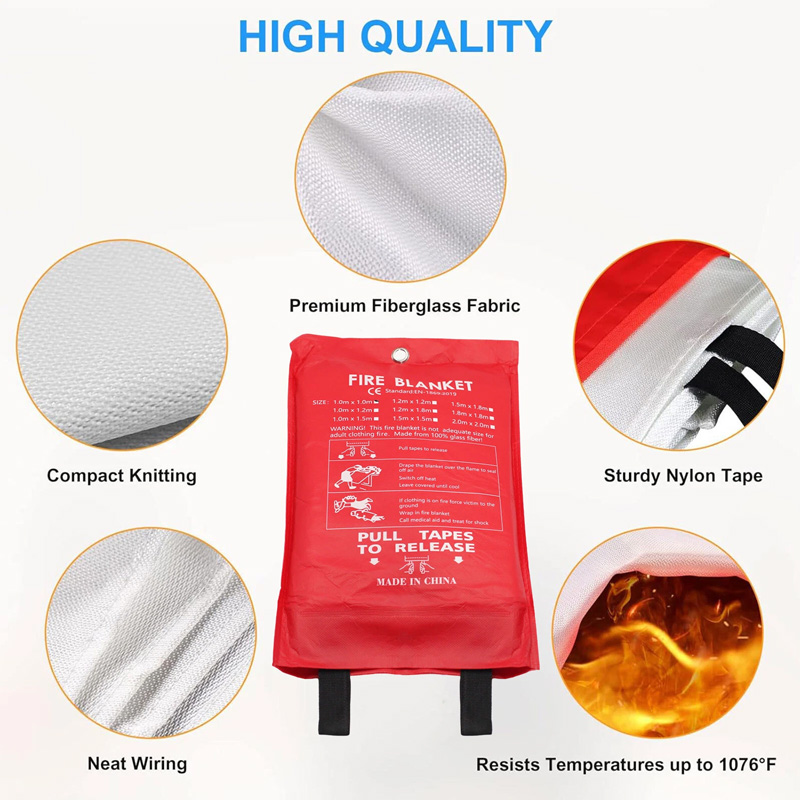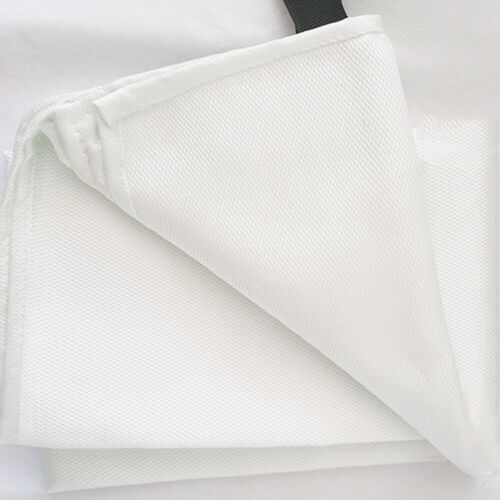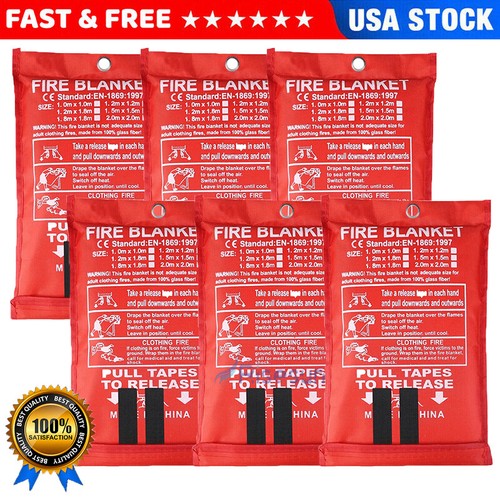Fire Blanket Use in the UK: A Complete Safety Guide
This guide explains proper fire blanket use in the UK, covering when to use them, how they work, and safety tips. You'll learn to handle small fires safely and comply with UK fire regulations.
What Is a Fire Blanket and When Should You Use It?
A fire blanket is a safety device designed to extinguish small fires by smothering them. In the UK, fire blankets are commonly found in kitchens, laboratories, and workshops. You should use a fire blanket for:
- Small pan fires (especially oil or grease fires)
- Clothing fires
- Small electrical fires (after power is turned off)
- Other contained Class F fires (cooking oils and fats)
Remember, fire blanket use in the UK is recommended only for small, contained fires. For larger fires, evacuate immediately and call 999.
How to Use a Fire Blanket Properly
Correct fire blanket use in the UK follows these steps:
- Pull the tabs to release the blanket from its container
- Hold the blanket by the corners with the folded edges facing you
- Protect your hands by folding the corners over (some blankets have hand protectors)
- Approach the fire carefully, staying at arm's length
- Place the blanket over the flames completely
- Leave the blanket in place until the fire is completely out and cooled
- Never remove the blanket to check - this could reignite the fire
UK Fire Blanket Standards and Regulations
In the UK, fire blankets should meet BS EN 1869:2019 standards. Look for these markings when purchasing:
- British Standard Kitemark
- CE marking
- BS EN 1869 compliance statement
The Regulatory Reform (Fire Safety) Order 2005 requires UK businesses to provide appropriate fire-fighting equipment, which often includes fire blankets in food preparation areas.
Where to Place Fire Blankets in Your Home or Business
For effective fire blanket use in the UK, position them:
- Within easy reach of cooking areas (but not directly above stoves)
- Near potential fire hazards (workshops, garages)
- Clearly visible locations with proper signage
- Away from heat sources that could damage the blanket
In commercial kitchens, fire blankets should be mounted on walls at a height between 1.2m and 1.5m for easy access.
Maintenance and Replacement of Fire Blankets
To ensure your fire blanket works when needed:
- Inspect monthly for damage or tampering
- Replace if the blanket shows signs of wear or contamination
- Follow manufacturer's replacement guidelines (typically every 5-7 years)
- Record inspections in your fire safety log (for businesses)
Never wash or attempt to clean a used fire blanket - this removes the fire-retardant treatment.
Fire Blanket vs. Fire Extinguisher: When to Use Each
Understanding when to use a fire blanket versus an extinguisher is crucial for UK fire safety:
| Situation | Fire Blanket | Fire Extinguisher |
|---|---|---|
| Small pan fire | Best choice | Risk of spreading flames |
| Clothing fire | Best choice | Not recommended |
| Larger fires | Not suitable | Appropriate |
| Electrical fires | Only if power is off | CO2 extinguisher preferred |
Common Mistakes in Fire Blanket Use
Avoid these errors when using fire blankets in the UK:
- Using on large or spreading fires
- Throwing the blanket instead of carefully placing it
- Removing the blanket too soon
- Using damaged or expired blankets
- Storing in inappropriate locations
Training for Effective Fire Blanket Use
While fire blankets are simple to use, proper training improves effectiveness:
- Many UK fire services offer free fire safety advice
- Businesses should include fire blanket training in staff inductions
- Practice with expired blankets (never use your emergency blanket)
- Teach all household members how to use fire blankets
Conclusion
Proper fire blanket use in the UK can prevent small fires from becoming disasters. By understanding when and how to use them, maintaining them correctly, and following UK safety standards, you'll be prepared to handle kitchen and small fires safely. Remember, fire blankets are just one part of a complete fire safety plan that should also include smoke alarms and evacuation procedures.







